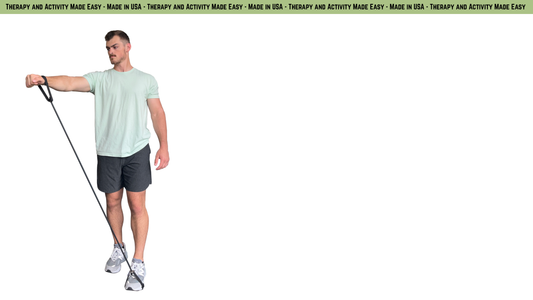
5 Common Causes of Lower Back Pain
Introduction
Lower back pain is a prevalent issue affecting millions of people worldwide. From desk workers to athletes, it can strike anyone at any time. Understanding the common causes behind lower back pain is crucial for prevention and management. In this article, we'll explore five common culprits contributing to lower back discomfort and provide insights into how to address them effectively.
1. Poor Posture
In today's digital age, where many of us spend hours hunched over screens, poor posture has become a leading cause of lower back pain. Slouching not only strains the muscles and ligaments in the lower back but also alters the spine's natural curvature, leading to discomfort and potential long-term damage.
Solution
Improving posture involves conscious effort and simple adjustments. Sit up straight, with your shoulders relaxed and your feet flat on the floor. Consider using ergonomic chairs and desks to support proper spinal alignment. Additionally, incorporating exercises that strengthen the core muscles can help maintain good posture and alleviate lower back strain.
2. Sedentary Lifestyle
Leading a sedentary lifestyle, characterized by prolonged periods of sitting or inactivity, is another common contributor to lower back pain. Lack of movement weakens the muscles supporting the spine, leading to imbalances and increased susceptibility to injury.
Solution
Combatting a sedentary lifestyle requires incorporating regular physical activity into your routine. Aim for at least 30 minutes of moderate exercise most days of the week, focusing on activities that engage the core, such as walking, swimming, or yoga. Additionally, take breaks throughout the day to stretch and move around, reducing the strain on your lower back.
3. Muscle Strain and Overuse
Engaging in activities that involve heavy lifting, repetitive motions, or sudden movements can strain the muscles in the lower back, leading to acute pain. Overuse injuries, often seen in athletes or individuals with physically demanding jobs, can also result in chronic lower back discomfort.
Solution
Practice proper lifting techniques, bending at the knees and using your legs instead of your back to lift heavy objects. Incorporate regular strength training exercises to build muscle endurance and protect against strain. If you're experiencing acute pain, rest and gentle stretching can help alleviate symptoms, but if the pain persists, seek medical attention to prevent further injury.
4. Degenerative Conditions
As we age, the spine undergoes natural degenerative changes, such as disc degeneration, spinal stenosis, and osteoarthritis, which can contribute to lower back pain. These conditions result in structural alterations within the spine, leading to nerve compression, inflammation, and discomfort.
Solution
While degenerative conditions cannot be reversed, their progression can be managed through various treatments. Physical therapy, chiropractic care, and targeted exercises can help improve flexibility, strengthen supporting muscles, and alleviate symptoms. In severe cases, surgical interventions may be necessary to address underlying structural issues and relieve pressure on the nerves.
5. Poor Ergonomics
The way we interact with our environment, whether at work or at home, can significantly impact our lower back health. Poor ergonomics, such as using improperly adjusted chairs or desks, sleeping on an unsupportive mattress, or wearing improper footwear, can exacerbate lower back pain.
Solution
Pay attention to your surroundings and make adjustments to promote better spinal alignment and support. Invest in ergonomic furniture, such as adjustable chairs and standing desks, to create a workspace that encourages proper posture. Choose a mattress and pillows that provide adequate support for your sleeping position, and wear supportive footwear that cushions the feet and maintains proper alignment.
Conclusion
Lower back pain can significantly impact quality of life, but understanding its common causes is the first step towards effective prevention and management. By addressing issues such as poor posture, sedentary lifestyle, muscle strain, degenerative conditions, and poor ergonomics, individuals can take proactive measures to alleviate discomfort and promote spinal health. Remember, small changes in daily habits and routines can make a significant difference in preventing and managing lower back pain in the long run.



